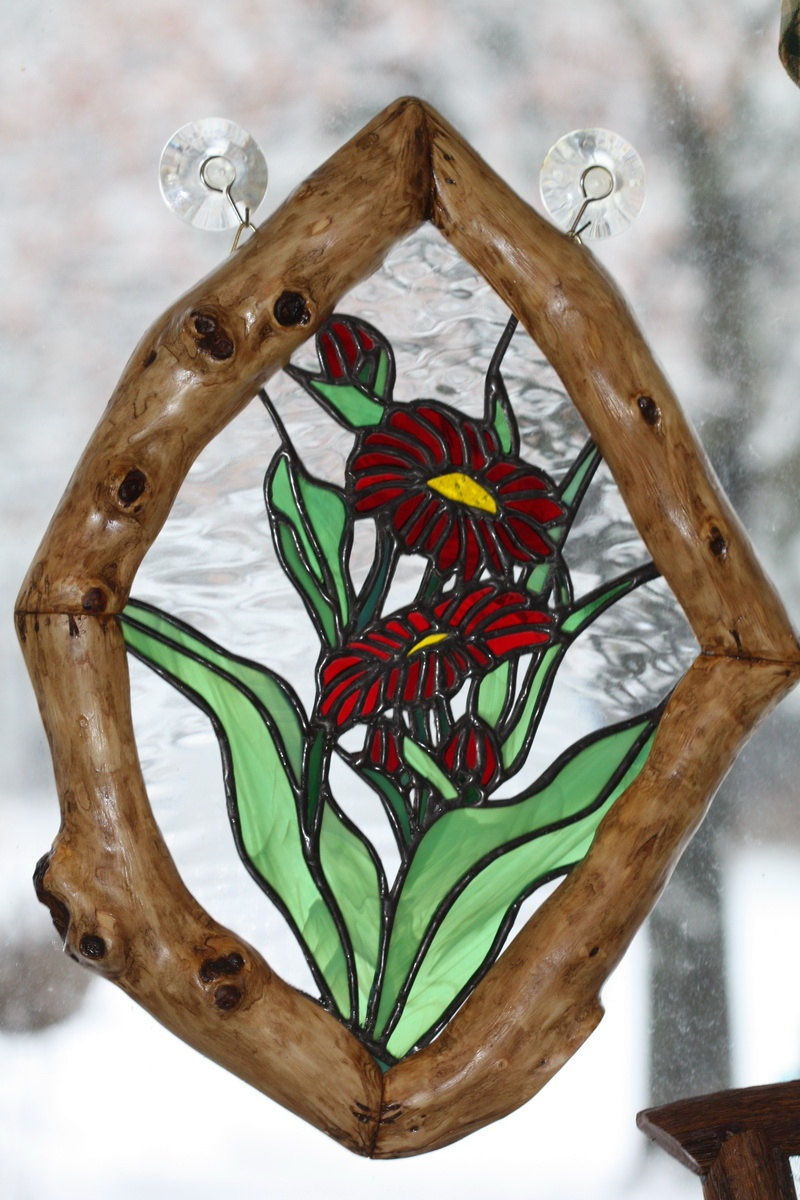A Short History of Stained Glass by Caveman Glassworks
- Paul Urteaga

- Oct 5, 2023
- 3 min read
Updated: Aug 3
Introduction
Thanks for joining us on a journey through times as we explore a history of stained glass. Imagine walking into a majestic cathedral, the sunlight streaming through colorful stained glass windows, casting a kaleidoscope of vibrant hues on the stone floor. The ethereal beauty of stained glass has captivated students and artists alike for centuries, and its rich history is filled with tales of skilled craftsmen, religious symbolism, and technological advancements.
Section 1: The Origins and History of Stained Glass
In our journey in the history of stained glass, we need to look to the ancient times, long before the advent of Christianity. The Egyptians and Romans were among the first civilizations to experiment with colored glass, using it primarily for decorative purposes. However, it was the medieval period in Europe that saw the emergence of stained glass as a significant art form. During this time, the influence of the Christian church played a crucial role in the development of stained glass, as it became a powerful medium for conveying religious narratives to illiterate congregations.
The creation of stained glass windows was a meticulous and labor-intensive process. Skilled craftsmen, known as glaziers, would start by designing the window on a full-scale drawing called a cartoon. They would then select and cut pieces of colored glass to fit the design, using various tools such as grozing pliers and a glass cutter. The pieces were then assembled using lead came, a flexible H-shaped lead strip, which held the glass in place. Once the window was complete, it would be installed in a frame and secured to the building using iron bars or iron saddle bars.

The beauty of stained glass lies not only in its vibrant colors but also in the way it captures and diffuses light. In the early days of stained glass, the glass itself was relatively thick and uneven, resulting in a dimmer, less luminous effect. However, as the art form evolved, craftsmen began to experiment with different techniques to enhance the translucency of the glass. They discovered that by adding metallic oxides to the glass during the manufacturing process, they could achieve a more brilliant and radiant effect when the sunlight passed through.
Section 2: The Renaissance and Beyond
In continuing with the history of stained glass, the Renaissance swept across Europe, stained glass experienced a decline in popularity. The focus shifted towards other art forms such as painting and sculpture, which were seen as more sophisticated and expressive. However, stained glass never completely disappeared, and its revival came in the 19th century with the Gothic Revival movement. Artistic visionaries such as William Morris and John La Farge brought new life to the ancient craft, experimenting with innovative techniques and pushing the boundaries of design.
One of the most significant advancements during this period was the development of opalescent glass. Unlike traditional stained glass, which relied on transparent or translucent pieces of glass, opalescent glass was opaque and could be molded into three-dimensional shapes. This newfound versatility allowed artists to create more intricate and dynamic compositions, giving rise to a new era of stained glass artistry.
The 20th century witnessed further experimentation and innovation in stained glass. Artists like Louis Comfort Tiffany and René Lalique embraced the Art Nouveau and Art Deco movements, incorporating bold geometric patterns and organic forms into their designs. The use of new materials and techniques, such as fused glass and acid etching, expanded the possibilities of stained glass, allowing for greater artistic expression and experimentation with texture and transparency.
Section 3: Stained Glass Today
In the modern era, stained glass continues to captivate students and artists alike. While the demand for traditional stained glass windows in religious buildings has waned, the art form has found new avenues for expression. Contemporary artists are pushing the boundaries of stained glass, incorporating it into architectural installations, public art projects, and even furniture design.
Advancements in technology have also revolutionized the craft of stained glass. Computer-aided design (CAD) software allows artists to create intricate and precise designs, while glass cutting machines and kilns automate some of the labor-intensive processes. However, despite these advancements, the essence of stained glass remains rooted in the traditional techniques and craftsmanship passed down through generations.
As students and artists, we have the privilege of standing on the shoulders of the masters who came before us, carrying forward the legacy of stained glass. Whether we choose to create traditional religious windows or explore new and innovative applications, the history of stained glass serves as a rich tapestry of inspiration and a reminder of the enduring power of art.
We're gratful for your visit and hope you'll take some time to check out more of our articles. Until next time - Press on Friends!!!
Looking for more information and topics? Visit Caveman's List of Blog Articles for more topics anf free stained glass patterns.




Comments